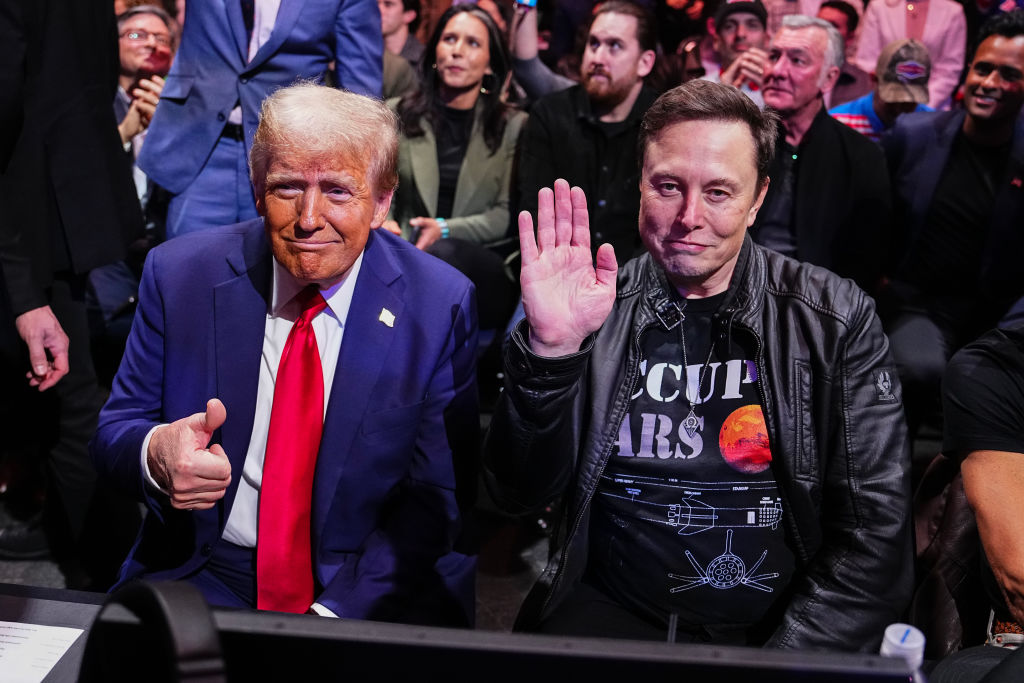The myth of any currency requires a creation story, and such is the case for Bitcoin, whose origins are shrouded in mystery. The first Bitcoin appeared on 3 January 2009: a long series of numbers and letters shimmering on a computer screen, a triumph of the libertarian imagination, a story no one yet believed. It was supposedly created by a man named Satoshi Nakamoto, who most likely never existed. No matter. Early Bitcoin aficionados took to calling their currency “Satoshis”. (In June, Trump tried to pull a similar eponymous trick with TrumpCoin, with much less favourable results, as it is presently trading at a tad more than one-hundredth of an American penny.)
In the 15 years that followed Bitcoin’s founding, the idea of a purely speculative store of value caught on, perhaps because blockchain technology fit the cultural moment so well. Here was a digital quintessence of nothingness that perfectly aligned with longstanding academic deconstructions of truth into metatextual black holes — the dour philosophes never realising that post-modern cynicism could possess cash value. The crypto bro, suckled on the teats of such over-arching nihilism, saw opportunity.
The revolution has well and truly left the ivory tower. The SEC’s recent approval of options trading for Bitcoin exchange-traded funds supercharged BlackRock’s and Fidelity’s Exchange-traded funds (ETFs), each of which attracted more than $3 billion in their first month of existence. There are presently 11 Bitcoin ETFs, which witnessed daily inflows of $1 billion last week.
The crypto bro’s contempt for the United States dollar is in keeping with MAGA’s denigration of status quo politics and disregard for standard economic wisdom (hashtag tariff war). In this regard, Trump has once again aligned himself with Andrew Jackson, the richest president America had ever known and a famously ill-tempered son-of-a-bitch who despised lineage, pedigree, and protocol. Like Trump, Jackson detested anyone or anything with more power or culture than he, so naturally he despised the East Coast banking elite. The result was his infamous destruction of the Second Bank of the United States out of mere spite against its genteel, priggish, and rather literary banker-in-chief, Nicholas Biddle.
What happened next may serve as a warning for today’s crypto maniacs. Stripped of a national currency, Jacksonian America turned to “wildcat banking” — a term referring to frontier financiers, no longer constrained by regulations or any oversight whatsoever, who set up their own banks in the farthest reaches of the uncivilised West. The assumption was that if their corporate headquarters were 1,000 miles away from anywhere, few people would bother to show up, wait in line for the teller, and cash in their paper currency. In one case, the Jackson County Bank’s holdings consisted of nothing more than a half-full drawer of lead, 10 penny nails, and fragments of broken glass — which, by the way, is more than Bitcoin can boast.
The remainder of 19th-century American financial history would be plagued by boom, bust, panics, and bankruptcy. To the rescue came commodity markets, which back then looked rather different to the kind of markets that BlackRock, Fidelity, the Winklevoss twins and Donald Trump have been backing for crypto. What everyone appears to have forgotten is that American commodity markets were created to stabilise the price of volatile necessities — such as bread — and in their heyday governed the price of everything from apples and plywood to silk and cat pelts. The balancing of the “future” price of imaginary wheat with the day-to-day “spot” price of real wheat turned out to be an extremely efficient way to overcome the chaos of ages past, a problem that had bankrupted farmers in times of plenty and starved citizens in times of scarcity.
